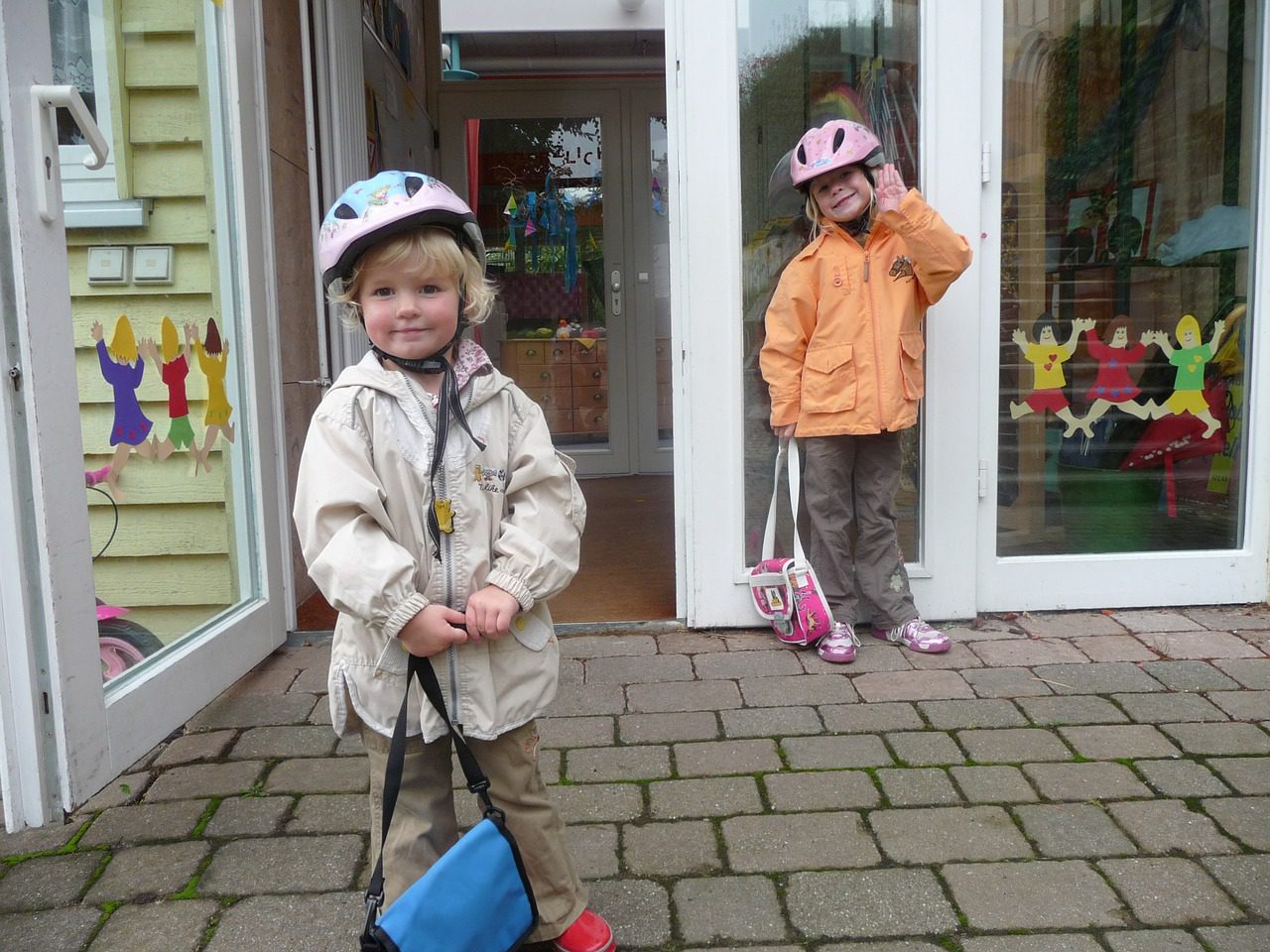When I creaked open the door to a first grade classroom, I noticed a dozen seven-year-olds sprawled around the room. About half of them were sitting at rectangular tables while the others were standing. Each one of them had a needle (a real one) between their fingers, intently sewing a Father’s Day badge. A soft, contented hum wrapped around the classroom. This was their only afternoon lesson for the week, so I expected them to be a little fractious. They were proving me wrong.
My colleague was hard to spot at first. She was sitting at one of the first grade tables at eye-level with a few of her standing students. They were watching her carefully as she quietly modeled the techniques of needlework.
After the lesson, I discovered that her first graders were using needles for the first time. Judging by the calmness in the classroom, I guessed that they had lots of previous experiences with sewing. Nope.
Before I stepped out, my colleague showed me a tray of needles. She shared that her only regret (about the lesson) was that most of the needles weren’t sharp enough (!). Apparently, blunt needles aren’t very good for sewing. As a former first grade teacher, I have to admit that I was biting my nails as I watched her students hold these real needles! I was just waiting for one of the blond boys to start a miniature swordfight.
***
Since school started in mid-August, I’ve been asked by many of my American colleagues to make generalizations about Finnish classrooms. They’re really curious. Admittedly, I’ve been hesitant. First, there are thousands of classroom in Finland and I’ve only observed a handful at my Finnish public school. Second, Finnish teachers are given a lot of freedom to find their own way of teaching and running their classrooms.
With that said, it’s been three months since I arrived in Finland. Lots of conversations with Finnish colleagues and classroom observations have helped me to make sense of Finnish classrooms. I’ll share what I know right now.
***
Recall the picture of my Finnish colleague. She’s quietly sitting at the first grade table while her seven-year-old students were practicing needlework for the first time. She’s not anxiously pacing around the classroom, checking in on everyone. Although she has her eye on the students, she’s not obsessively looking around. When she speaks to the children, her words aren’t rushed. She’s calm.
My colleague’s peaceful disposition in the classroom isn’t exceptional. I keep observing other Finnish teachers who approach their work in the same way. They are careful to pace themselves as if they’re long-distance runners. In the classroom, they’re present with their students, listening carefully to them. Outside of the classroom, they’re taking regular breaks throughout the day and connecting with other teachers.
In the States, I often witnessed teachers (including myself) who worked tirelessly inside and outside of the classroom. I was a bit proud of my “workaholism,” thinking that it made me a stronger teacher. It’s my sense that Finnish teachers see restlessness as a sign of weakness. Slowing down with students and colleagues is viewed as important.
***
My wife’s cousin is studying to become a teacher at the University of Helsinki. Over the summer, I was raving about a classroom management book that focuses on starting the year off right and she was really interested. I asked her to share what she’s learned about classroom management throughout her studies. I was anxious to hear about Finland’s best practices in this area. I was dumbstruck when she told me that she hadn’t taken a single course on classroom management.
Earlier this week, I sat down with a young colleague who echoed my wife’s cousin. She never took a classroom management course before graduating with a master’s degree. She explained to me that her program was very theoretical, especially towards the tail end. I asked her to identify things that she missed studying before entering the classroom. Right away, she named classroom management.
My colleague shared that her teaching program was careful not to provide answers; the university encouraged students to decide on their own ways of teaching effectively. She reasoned that this philosophy would explain the absence of a classroom management course.
***
Earlier this week, an older colleague told me that the typical Finnish classroom is atypical. After a couple of minutes of discussion, I started to catch her drift. In Finland, it’s common to find classrooms that are very different from each other. This makes sense given that a teacher’s individuality is deeply respected.
As an American teacher at a Finnish school, I’m seeing how teacher-individuality is honored. My teaching style is probably strange to many of my colleagues, but I’m not being scoffed at (not openly, at least!). During the first month of school, another one of my colleagues recognized that I was using unfamiliar teaching strategies. She told me that she was excited to learn from me this year. Also, she shared her hope that I would learn from her, too.
My colleague’s attitude speaks loudly about the respect that’s placed on teacher-individuality in Finland. Teachers have freedom to find their own way in their classrooms and learn from each other.
***
Tim Walker is an American teacher and writer based in Finland. He writes regularly about education and culture at Taught by Finland.
Follow Taught by Finland on Facebook!




2 Comments
I love how Finnish culture seems to have a respect for autonomy, but simultaneously doesn’t do the full “rugged individualism” that American culture does. Is Finnish culture more collectivist than American culture is?
Hand-sewing brings back fond memories. I attended public school Kingergarten in Kansas in 1991 and we got to use real metal needles to make quilted pillows while doing a unit on quilting. We chose colors of paint and then made a hand-print on two pieces of white fabric and then chose fabric strips for the borders of our pillow, and a big square for the back. A local quilter then took one of the hand-prints we made and made a class quilt with all our hand prints. We even learned a bit about what different quilt patterns mean. I still have my pillow 🙂
Our students everyday get the chance to sew a button and they are 3-5 year olds in the Same classroom. Ami Authentic Montessori. Which is a class a favourite and quilting would be awesome to add! Thank you for sharing Tim! Loved the article.